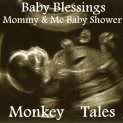So in light of all of this, BPA has become a big topic of research for me. For one of my college courses this semester I have chosen BPA as my main topic and will be reviewing and summarizing multiple articles over the next few months.
This first article is "Just How Harmful Are Bisphenol-A Plastics?" published in the Scientific American Journal back in September 2008...back when our government still considered there to be safe levels of BPA and before Canada and California had laws against BPA use in childrens products for children under 3 years of age. If you have ever been asked "Why do you not want plastics with BPA?" "How is it toxic?" "Why doesn't the government ban it if it's toxic?" this summery of the article should help you out a lot! It tells you where BPA came from, it's history, and the contraversy behind the question of "Is there a safe limit of BPA or should it be banned completely?".
After reading my paper, I'd love to hear your opinion on the BPA issue! What do you think? Does knowing this information make you feel more confident in your decision to not use BPA or do you feel like more evidence is needed?
Hope you find this a good read! One of my topics of passion right now! :)
How Much of the BPA Story do You Know?
Source: "Just How Harmful Are Bisphenol-A Plastics?" published in the Scientific American Journal Sept. 2008
http://www.scientificamerican.com/article.cfm?id=just-how-harmful-are-bisphenol-a-plastics
Bisphenol-A (BPA) plastics have come under great heated debate recently, but the debate about the toxicity of BPA and the study of BPA's effects has been going on for quite some time. In the Scientific American article "Just How Harmful Are Bisphenol-A Plastics?" back in September 2008 you can see that the controversy started many years ago....and yet it is still happening today.
BPA is a chemical that is used in making many plastics, but it's original use was quite different than that...it was a synthetic estrogen back in the 1930's. When combined with other components, including phosgene (which was used as a toxic gas in war time), it can create a very useful plastic...plastic we use on a daily basis and rely on heavily. Unfortunately, some are now claiming that BPA, the plastic we all love and rely on, is actually very toxic to us.
Geneticist Patricia Hunt accidentally stumbled into studying BPA toxicity and its effects when her lab mice came up with egg defects when exposed to Bisphenol-A, and she has since been working on proving this toxic effects in humans, which has been found to be quite difficult. It seems that BPA does not behave the same way as other toxins we are familiar with, which causes problems with studying it. This, in turn, causes the conflict as to if BPA is highly toxic and should be banned, or if its exposure should just be regulated and limited to what are considered "safe" levels.
Many companies are questioning as to why, if BPA is used in everyday plastics for centuries, have there not been any harmful effects on humans accounted for if BPA is toxic? There have been many studies in the past years proving BPA causes harmful defects in rodents, including different kinds of cancers and genital defects in males, but proof that these same results can occur in humans are questionable. Why? Unfortunately, these results have not been able to be duplicated 100% of the time in lab tests. This inconsistency is causing many skeptics. However, at a closer look at these studies that failed to duplicate the findings of BPA being toxic at the low levels Hunt was claiming it to be, these studies were all funded by industries, where as the government funded studies found conclusive results. One could question whether bias was present in those studies that did not replicate similar results.
There are also claims about BPA causing some of the hot-topic issues discussed today, like early onset puberty in females, ADHD in children, and the overwhelming amount of obesity occurring. If this can be proven it would cause a huge change in the types of materials used in our plastics, lining of aluminum cans and other preserved shelved food like infant formula. This would be very costly to manufacturing companies and the industry of plastics.
Hunt believes she has an explanation, or at least some insight, into why the debate about the toxicity level of BPA are still controversial over a decade after her research found its results. When we normally consider toxicity we think of it as a "safe" amount is ok, a bigger amount can cause some unfortunate effects, and a large amount can cause potentially great damage. Unfortunately, this is not the case with toxins that are harmful through the route of being hormone disruptors as hormone disruptors can cause harmful effects at very low levels, and can even shut down the body's response at high level of exposure. BPA is such a toxin and causes harm by imitating estrogen (remember, it's original use was as an estrogen imitator before it was used to make plastics). Studies have shown that the bonds that form when products are manufactured with BPA not all of the chemical bonds with BPA get locked together. This can cause BPA leaching. Leaching is most prevalent when it is exposed to high heat or even abrasive damage such as scrubbing pads used for cleaning dishes, and this leaching then gets into the food and drink we consume. When tests were done on humans 93% had detectable amounts of BPA in their urine, and human blood and breast milk have also been shown to carry traces of the toxin.
The greatest concern, and the reason researchers like Hunt are extremely prevalent about asking for the ban of BPA use and not just "safe limit" legislation, is the fact that BPA does not only affect the individual that it enters. Recent studies that Hunt has produced show that if a pregnant female is exposed to BPA, especially at the stage where her fetus is producing its' eggs, both the fetus as well as the eggs of that fetus are affected, resulting in tarnished eggs and problems for that child and it's offspring in the future.
It is studies like this one that got Canada to ban the use of BPA and California to recently pass into law a bill that does not allow BPA in any children's items, such as toys, feeding items, bottles etc., of children under 3. Children are much more susceptible to levels of toxins than adults are and, as these states and countries have determined it is better to be on the safe side than sorry when it comes to potentially highly toxic chemicals.
Yet the debate is still inconclusive, as are the results of many studies. The question is not "is BPA bad", the question is, is BPA completely unsafe, or just unsafe in certain amounts, quantities and uses? That choice, right now, lies in the hands of the consumer until further testing proposes enough evidence to satisfy our government.



















3 comments:
Following your blog from New Friends Friday. Can't wait to read more. I have such a hard time "living green" and since my son is around your daughter's age, I am interested in the products you use for her and around the house. Would love for you to check me out at http://hartofstonecrafts.blogspot.com/
Miranda
I was not expecting a BPA lesson when I clicked on your blog but as a mom of 2 young kids, I was glad to read it!
Now following via Friendly Friday @ Thanks Mail Carrier!
http://www.MeantToBeMAMA.com
Hoping you'll follow back!
It's not just a question of toxicity, it's how bad it is to make. I just think plastic is a negative energy as is in a home. I used to sell tupperware, and I was good at it, and now I am getting rid of it, slowly but surely. All my kiddos have klean kanteens, LOVE THEM! I use them everyday. I got some stainless steel dishes for my kids off noplastic.ca after much research they were the cheapest.
Post a Comment